In her fourth solo exhibition at Galleri K, the acclaimed artist Nina Roos (Finland, born in 1956, lives in Helsinki) conjures up visions that cannot be fully captured on the stretched canvases she uses.
It is not that they are visionary in the conventional sense of being overwhelming or programmatic, or that the oil paint has finally outsmarted her unique mastery of its liquidity and viscosity, but rather that the square format cuts her compositions off arbitrarily. Perhaps they are no longer compositions at all. They seem only casually interested in holding expansive and settled energies together within themselves or in resisting the pull from invisible forces outside their physical limits. What motivates or drives them remains out of sight, beyond the image as a privileged site for an event.
Roos’s new paintings are, in a manner of speaking, visions of the non-visual. This is especially true of the newest of them, all painted in 2022. Of the three canvases in the series that lends the exhibition its title, The Image is Collapsed into the Body (each measuring 175 × 185 cm), two appear to mimic a forking tree trunk, perhaps growing tilted, perhaps already felled, but they do so in a reductive, rectilinear fashion that evokes the airtight pictorial space of early cubism. The third (in fact the first) member of the small ensemble problematises the appearance of the circle in this kind of de-centred composition and effectively causes any analogy involving mandalas, irises or planets to collapse in front of our eyes.
Schwindel, Gefühle (also 175 × 185 cm) borrows its title from W. S. Sebald but offers no direct references to his writing. Instead we see forms that are both deliberately imprecise and devastatingly incisive. Slightly curved horizontal lines slice into a painted surface of all but indeterminable colour, suggesting a dizzying planetary rotation impossible to contain within the painting.
Three smaller paintings (measuring 75 × 130, 100 × 110 and 70 × 80.5 cm) share the title Liminal Space. The compositions again come across as unsettled, even somewhat scattered, until we remember to think of them as fragments of an unseen painted reality stretching far beyond the four edges of the canvas. This time the overall hue is reminiscent of skin, and Roos has added curious slot-like triangular shapes: squinting eyes that persuade us to read the series as mask play.
The underlying concern of the exhibition – a tension between image and body, abstraction and figuration, order and energy – is further substantiated in two works from 2021. Melancholia (240 × 200 cm) channels both Albrecht Dürer’s and Lars von Trier’s astrological metaphors (in the etching from 1514 and the film from 2011 respectively). Roos’s painting of the dark planet rolling through a softly creased tablecloth sky is both saturnine and self-illuminating.
Her free paraphrase of Pieter Breughel the Elder’s drawing The Beekeepers and the Birdnester (ca 1568) is titled Beekeepers (two paintings, both 130 × 130 cm) and offers a more harmonious take on image composition. The eerie wickerwork baskets and facemasks of the original have dissolved into hulking and most probably male presences, lit up by the thinly but firmly applied whitish-greyish paint. It is as if the figures are inflated by protective padding, and only a few details support the interpretation that they are animated from within: a squinting eye here, a tensed shoulder or armpit skinfold there (although the latter also looks suspiciously similar to the forking tree trunk).
Cranium, finally, is a series of four paintings from 2020 (70 × 75 and 75 × 70 cm) and the only work that has been previously exhibited (at Kunsthalle Kohta in 2020 and Amos Rex in 2021, both in Helsinki). The title is motivated by the recurrent presentation of a head-shape as our ‘inner eye’ might register it, from different angles simultaneously. In the second and third paintings we find ourselves gazing on a skull from above, whereas the first and last canvases offer variations of the en face. Yet all four images are on their way towards self-extinction, much like the beekepers or the planets.
By looping the abstract into the figurative in her open-ended, ever-changing ways, Nina Roos seeks to fixate the ongoing crisis of seeing and naming, and of the correct actions these skills are supposed to inspire in us. If we are no longer able to fully grasp what we see by conveying it in words of the necessary exactitude, how can we know what to do to make things right?
Anders Kreuger
The exhibition will be on view until 30 April, 2023
(Closed for Easter from 2 April to 10 April)


